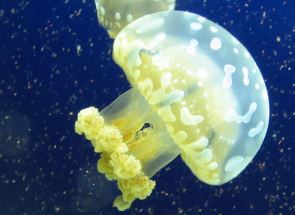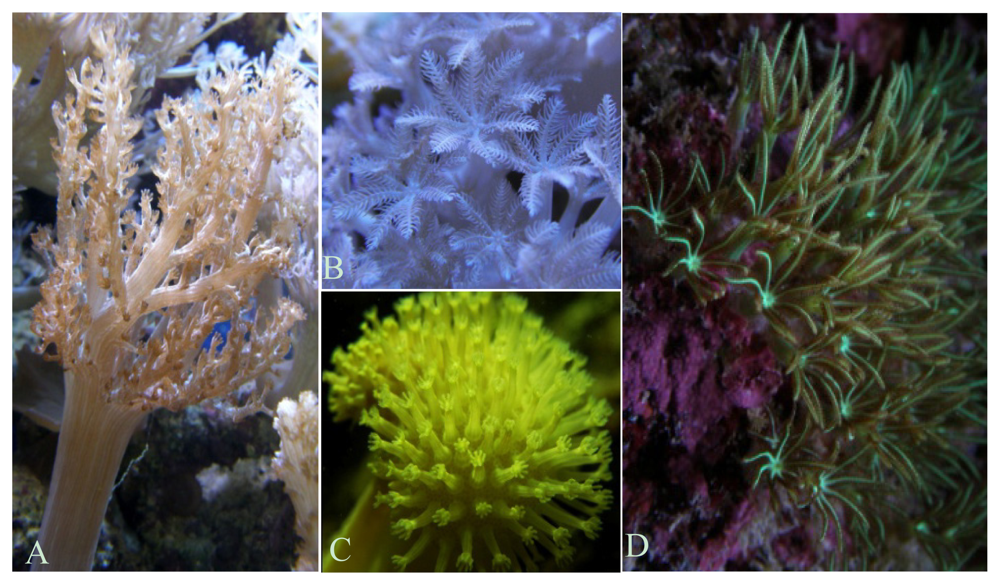

In some groups, this layer is quite thin, while in others (for example, jellyfish), the mesoglea makes up most of the mass and the structural support of the animal. A jelly layer with relatively few cells, called the mesoglea, is found between the ectoderm and endo-derm.

The mouth is surrounded by tentacles covered with the cnidae, and the body is either shaped into a tubelike polyp stage usually attached to the benthos or a mushroomlike medusa stage ("jellyfish") generally found swimming in the water column. The basic body organization of cnidarians is simple: a radially (or biradially) symmetrical animal composed of two cell layers (the ectoderm/epidermis and the endoderm/gas-trodermis), with a single body opening-the mouth. The phylum contains approximately 10,000 species. Cnidarians are divided into four extant classes- Anthozoa (containing sea anemones, stony corals, soft corals, gorgonians), Scyphozoa (true jellyfish), Cubozoa (box jellies or sea wasps), and Hydro-zoa (hydroids, fire corals, jellyfish, siphono-phores, Portuguese-man-o'-war). (In addition to nematocysts, the other two classes of cnidae are spirocysts and ptychocysts.) The phylum first appears in the late Precam-brian or Vendian period, and the group is generally considered the sister group of all meta- Some jellyfish are active predators that use their tentacles to capture and subdue prey others are filter feeders that catch small prey and food particles that drift by in the water column.

The name of the phylum derives from cnidos, meaning "stinging nettle" in Greek, and refers to the stinging nematocyst class of cnidae-the microscopic structures that define the phylum. Cnidarians are a major phylum of aquatic (and mostly marine) invertebrates that include many of the most recognizable shoreline creatures, including sea anemones, jellyfish, and corals.


 0 kommentar(er)
0 kommentar(er)
